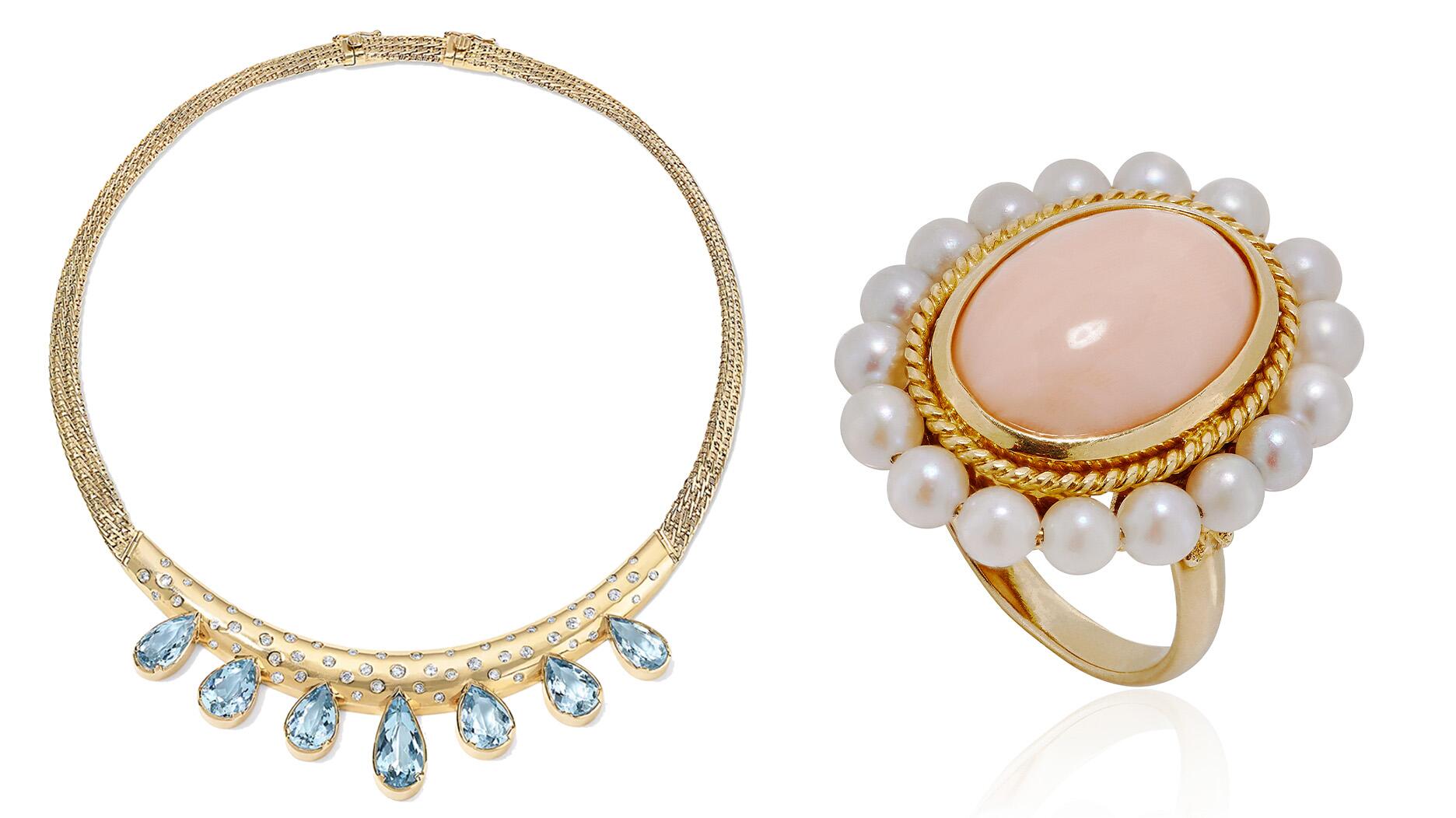The couple pleaded guilty to concealing at least $127 million in cash transactions at its precious metals businesses.
Gender bias case against Sterling moves forward
An arbitrator has issued a mixed ruling in the ongoing gender discrimination case against Kay and Jared parent company Sterling Jewelers.
New York--An arbitrator ruled this week that a group of women can pursue claims challenging Sterling Jeweler Inc.’s pay and promotion practices as a class though she threw out claims that the alleged discrimination was intentional.
In a 118-page decision released Tuesday, arbitrator Kathleen A. Roberts ruled that the 12 claimants could proceed as a class in arbitration to determine if the Akron, Ohio-based retailer’s compensation and promotion practices have a “disparate impact on women.” Sterling has fought for years against having the case certified as a class.
If disparities are found for which there is no justifiable business reason, then the women will be eligible as a class to affect changes in Sterling’s practices and will be able to pursue claims for lost wages individually.
In terms of alleged pay discrimination specifically, the class covers women who worked at Sterling between July 22, 2004 and the yet-to-be-set date of the trial, which will take place before the same arbitrator. In terms of alleged promotion discrimination, it covers women who worked at Sterling between Dec. 7, 2004 and the trial date.
What the arbitrator denied were the women’s claims of disparate treatment, meaning that the discrimination was intentional and part of an overall corporate culture that demeaned female employees.
In denying the women’s claims of disparate treatment, the arbitrator stated in her ruling that the claimants failed to provide the “significant proof” necessary to pursue claims of intentional discrimination.
This burden of significant proof Roberts relied upon in this case was the one set in the Wal-Mart gender discrimination case, though she noted that the Wal-Mart decision is one that presents “substantial hurdles” for pursuing claims of intentional discrimination as a large class.
The arbitrator wrote, “While the evidence in [the Sterling] case”--a case that includes particularly salacious claims that women were groped and grabbed, solicited for sex and expected to undress publicly at often-mandatory company events, as well as internal company memos acknowledging that the company paid women less than men--“may be in some respects stronger than the evidence presented in Wal-Mart, it fails to provide significant proof that Sterling operated under a general policy of discrimination.”
Roberts called into question specifically the opinion of one expert for the claimants, James Outtz, stating that he cannot answer the “essential question” of what percentage of the employment decisions at Sterling are determined by a “gender-discriminatory
She also stated that Outtz’s conclusions are not supported by reliable methodology. Among other things, he disregarded about 600 declarations written by the company’s female employees that reflect a very different view of the company’s treatment of women. “His decision to disregard this evidence, without any explanation, at a minimum calls his objectivity into question,” Roberts noted in her ruling.
Both sides are claiming the arbitrator’s ruling as a victory.
Joe Sellers, an attorney representing the women, said it was an “enormous achievement” for his clients and a “very important case” that gives them the opportunity to affect broad changes in a company that’s a leader in its industry.
Sterling, meanwhile, called the ruling “favorable,” pointing to the fact that the arbitrator rejected claims that Sterling had “systematically and intentionally” discriminated against female employees.
Regarding the portion of the arbitration that Roberts did allow to move forward, company spokesman David Bouffard said, “Sterling is optimistic that it will be able to demonstrate that the case is without either factual or legal merit in the next phase of the proceedings. We will continue to vigorously defend ourselves.”
The Latest

Consumers shared concerns about prices, inflation, tariffs, trade, and politics in the survey’s write-in response section.

In February 2026, the auction house will move its headquarters to the former Steinway Hall, a neoclassical landmark on Billionaires’ Row.

How Jewelers of America’s 20 Under 40 are leading to ensure a brighter future for the jewelry industry.

The new show will take place Jan. 23-25, 2026.


The former BHP Billiton leader and Gemfields chairman is remembered for his influential leadership throughout his 50-year mining career.

The LVMH-owned brand has partnered with the costume design union to revamp its award for 2026.

Roseco’s 704-page catalog showcases new lab-grown diamonds, findings, tools & more—available in print or interactive digital editions.

In the recent multi-shipment seizure, CBP also found counterfeit Audemars Piguet, Moncler, and Chrome Hearts items.

Helzberg’s Chief Retail Officer Mitch Maggart shared details about its tests of a new store concept rooted in an elevated luxury experience.

Jewelers of America execs and National Jeweler editors discuss tariffs, the sky-high gold price, and the engagement that broke the internet.

The luxury goods company said founder Ippolita Rostagno will remain at the brand’s helm.

Laura Burdese, who joined the Italian luxury brand in 2022, will take on the role in July.

The National Jeweler editors revisit the most noteworthy industry happenings and design trends from 2025.

Need a gift for the cat lover who has everything? Look no further than our latest Piece of the Week.

It purchased the “Grosse Pièce,” an ultra-complicated Audemars Piguet pocket watch from the ‘20s, for a record-breaking price at Sotheby’s.

The lab-grown diamond grower now offers custom engagement and fashion jewelry through its Kira Custom Lab Jewelry service.

Chandler got his start at Michelson Jewelers and has served as DCA president and CEO since 2001. He will retire at the end of the month.

The boutique is slated to open this week inside Terminal 8, offering pre-owned Rolex watches and more to international travelers.

Sponsored by Digital Monitoring Products

The special-edition egg pendant ingested in a New Zealand jewelry store was recovered after a six-day wait.

Associate Editor Natalie Francisco plays favorites with Piece of the Week, selecting a standout piece of jewelry from each month of 2025.

The “Love and Desire” campaign is inspired by the magic that follows when one’s heart leads the way, said the brand.

Two awardees will receive free tuition for an educational course at the Swiss lab, with flights and lodging included.

Berta de Pablos-Barbier will replace Alexander Lacik at the start of January, two months earlier than expected.

Sotheby’s held its first two jewelry sales at the Breuer building last week, and they totaled nearly $44 million.

Winners will receive free registration and lodging for its fourth annual event in Detroit.


























